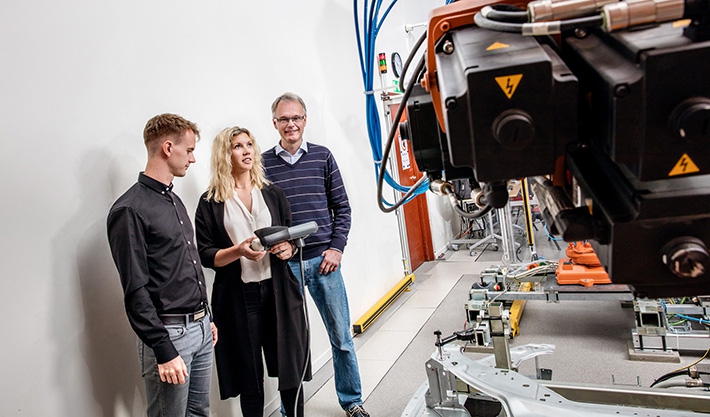
Smooth robot movements could cut energy usage by up to 40%
November 16, 2015
By Manufacturing AUTOMATION

Nov. 16, 2015 – By minimizing the acceleration of industrial robots, energy consumption can be reduced by up to 40 per cent while retaining the given production time — according to a optimization algorithm that was developed by researchers at Chalmers University of Technology in Sweden.
Optimization of the robot’s movements reduces acceleration and deceleration, as well as the time the robot is at a standstill since being at a standstill also consumes energy, according to the researchers.
“We simply let the robot move slower instead of waiting for other robots and machines to catch up before carrying out the next sequence. The optimization also determines the order in which the various operations are carried out to minimize energy consumption – without reducing the total execution time,” says professor Bengt Lennartson who initiated the research together with, among others, General Motors.
The optimization never changes the robot’s operation path, only the speed and sequence.
“Thus, we can go into an existing robot cell and perform a quick optimization without impacting production or the current cycle,” says Lennartson.
To achieve safe optimization, several robots moving in the same area need to be coordinated, according to the researchers. The optimization tool will therefore initially identify where robots may collide, and the entry and exit positions for each collision zone, and for each robot path.
The method has been tested in the Robotics and Automation Laboratory at Chalmers University of Technology. The results show a reduction in energy consumption of between 15 and 35 per cent for individual robot movements. For multi-robot systems the tests show greater energy savings, up to 40 per cent.
“The first test results have shown a significant improvement, such as a 15 to 40 per cent energy reduction, but the results are still preliminary. In order to estimate the actual energy savings, further testing in industry is required,” says Kristofer Bengtsson, who is responsible for the implementation of the new optimization strategy.
In robot-intensive manufacturing industries, such as bodywork factories in the automotive industry, robots consume about half of the total energy used for production, notes the research group.
The optimization program starts by logging the movements of each robot during an operations cycle, as well as any collision zones. This information is processed by the optimizer, which generates new control instructions that can be directly executed by the robots.
“The goal is to make this kind of optimization standard, and included in robots from the start. At each adjustment of the operating sequences, a new optimization is conducted by default. But as we all know, it takes time to bring a development product into a robust production process, with several years of engineering work,” explains Bengtsson.